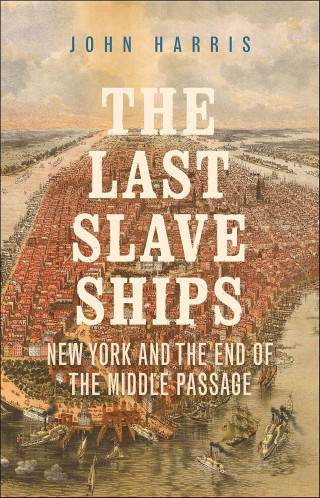Sanchez wanted to be a spy to wreak revenge on the slave traders who had drawn him into their dealings—and he wanted to make money doing it. But although he was never explicit about it, he seems to have had a broader ideological motive. A few years later, he wrote anonymously in the New York press, attacking slave traders and corrupt officials, and making clear his intention to “destroy the slave trade” as a whole.
Archibald was certainly impressed by Sanchez when he met him, and sensing the Cuban immigrant could be useful, he offered him a contract. From 1859 to 1862, Sanchez acted as a full-time informant for the British, working for £400 a year plus bonuses based on captures resulting from his information.
Sanchez worked hard. He ventured onto the docks, mingling with other merchants, sailors, caulkers; anyone who might have news. He struck up what he called “casual conversation” with these men, but he was hard at work, plumbing for information. What ships were leaving for Africa? When? Who owned them? Sometimes he backed off, worrying he would “expose” himself to suspicion, but he gleaned plenty of intelligence. He also thumbed through a dozen newspapers from New York and elsewhere, searching for information on ship departures and arrivals, vital clues on the whereabouts of slavers. He even recruited his brother back in Cuba to write to him about the island’s trade, which was always closely tied to New York’s.
The result was an incredible paper trail. Sanchez wrote detailed letters to Archibald, sometimes several times a week, with the latest news. Most of his letters concerned the names of slave ships and their owners, as well as their whereabouts. A typical letter from 1859 reported a slaver disguised as whaling ship—an occasional ruse of the Portuguese: “Laurens: owned by Lima Viana, a Portuguese in New York…fitted out [as] a whaler under the command of [captain] Curtis.” In the same letter, he also informed Archibald that the Asa Fish had recently left New York “loaded by a Portuguese and cleared … for Porto de Lenha [Africa]” where it would “take in a cargo of slaves.”
Sanchez scribbled at least 178 hundred missives in total. Fearing for his life – with good reason – he often wrote in cypher and never signed his name. Archibald was amazed by this correspondence. A few months into his work, the consul told in superiors in London that Sanchez had been in “almost daily communication” with him, supplying “detailed information of the movements of no fewer than fifty [slave trading] vessels.” Archibald was convinced that this information was derived on “extensive and authentic sources of intelligence.” He was right; in all, Sanchez reported on four in every five slaving voyages that crossed the Atlantic Ocean during his tenure as a spy. Aside from the slave traders themselves, no-one knew the traffic better.
